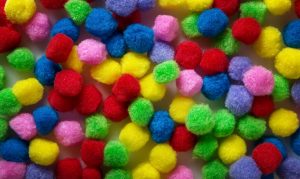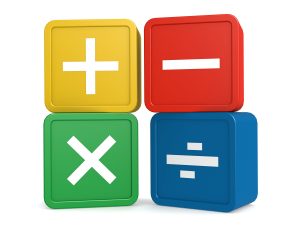Looking for more ways to reinforce math concepts for your children? Try math manipulatives! Depending on your child’s learning style, math manipulatives may be supplemental or your child might have needs that require them. If your child is a visual-spatial learner or one who is hands-on, you may have already figured out the benefits to math manipulatives. Perhaps you have a bin of math manipulatives but have no idea where to begin. If you feel like your child could benefit from math manipulatives but need some fresh ideas on how to use them, keep reading!
But First, Get Crafty
Before you do anything, you’ll want to create your own magnetic math manipulatives. To get the most benefit out of them, you’ll also want to have a magnetic dry erase board or paint an old cookie sheet for a budget-friendly alternative. A magnetic board will enable you to stand and teach in front of your children instead of being confined to a table. If you create just 25-50, you’ll have more than enough to do most elementary tasks for which manipulatives would come in handy.
To create magnetic math manipulatives, use hot glue to adhere strong round magnets to colorful pom-poms. That’s it! If you’re feeling extra ambitious, you can even change your math manipulatives out for each holiday/season! Just head to the hobby store and grab pom-poms that match the current or upcoming holiday.
Counting
You can make a “caterpillar” by lining up several fuzzy pom-poms on the board and drawing its antennae and legs. Then, have your child count how many pom-poms you used to make the caterpillar. Change the number out so your child has a chance to count various sets.
Addition/Subtraction
You can make the caterpillar “grow” (addition) or “shrink” (subtraction). Have your child write out the number of pom-poms that make up the caterpillar. If it “grows” by three more pom-poms, how long is it? Now suppose it “shrinks” by five pom-poms. Let your child discover how many are left.
Multiplication/Division
To use your pom-poms for multiplication and division, you’ll need a few sandwich bags. For each “set,” open a sandwich bag and use a magnet to attach it to the board. Drop a few pom-poms into each bag, making sure you use the same number of pom-poms in each bag. Use this to demonstrate multiplication facts to your child, such as “two groups of three.” To do division, start with a specific amount of pom-poms and hang up bags. Then, evenly distribute the pom-poms into the bags, demonstrating such facts as “six (amount you start with) divided by three (number of bags) equals two (number in each bag).”
Ratios
One benefit to using multicolored pom-poms as math manipulatives is that you’ll be able to demonstrate the ratio of one color to another. On the board, demonstrate for your child that for every two green pom-poms there are four red pom-poms. Once this concept is established, invite your child to figure out other ratios using the rest of the pom-poms.
Fractions
You can use your math manipulatives to show your child what fractions mean by separating the pom-poms by color. Place three green pom-poms on the board and add two red pom-poms. Explain to your child that 3/5 of the pom-poms are green and 2/5 of the pom-poms are red.
 Math manipulatives are useful for teaching the basics of number sense as well as for higher-order math skills. What are some other ways you’ve used math manipulatives?
Math manipulatives are useful for teaching the basics of number sense as well as for higher-order math skills. What are some other ways you’ve used math manipulatives?
For even more practice with these and other math concepts, invite your child to practice skills using online math games!
Additional Homeschool Math Resources
Math Grade Level Placement Tools
5 Effective Resources for Middle School Math
Homeschool Help For High School Math
How to Help Your Child Tackle Math Anxiety
Tasha Swearingen
Tasha is a homeschooling mom to 5 and has been homeschooling for 14 years. Currently, her children's ages span from toddler to young adult. Tasha has a Bachelor's of Science degree in Social Sciences from Florida State University and is working on her MBA through SNHU/Berklee School of Music.
Latest Posts

While nearly every college and university today is eager to accept homeschooled students into their institutions, homeschooling families need to understand that their student’s application…
Read more >
Guest Post by Gabriel Morse For several years, I sat for long hours every day behind one of those battleship gray desks in a windowless, dull, gray office. The pay was enough to take care…
Read more >
This post is sponsored by Little Monsters Universe. I'm Tina Salmanowitz, an advocate for homeschooling and science education. With over a decade of experience as a science educator (in class…
Read more >



